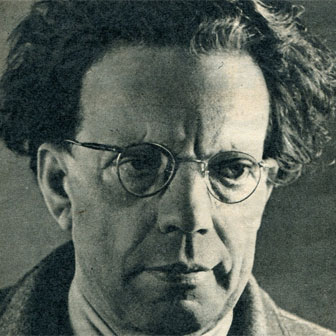All people breathe. It is one of our most instinctual behaviors. However, if you poll singers, 90% of them will respond that breathing is the most crucial aspect of vocal technique. Is there a particular method to breathe that improves your voice? Yes!

We examine breathing in relation to vocal variation as a speaker in this essay. I will give you some simple instructions and advice on how to use air more effectively to enhance your voice. Applying these suggestions will give your speech greater Power, Better Pacing, Interesting Pitch, and Effective Pauses.
- Article Series on Vocal Delivery
- Speaking Breaks Filler Words (um, ah)
- Speaking Tempo
- Audio Volume
- Projected vocals
- Vocal Conditioning Exercises
- Breathing\contents
- Lose Your Voice, Lose Your Breath
- A description of breathing
- 101 Breathing
- Variety in Breathing and Singing
- Pace\pitch\Pause
- Powerful, Useful Tips for Everyday Life
- Lose Your Voice, Lose Your Breath
The narrator of the short story “Loss of Breath” by Edgar Allen Poe passes out just as he is going to yell at his wife. His voice likewise stops along with his breath, except for a few frog-like sounds. He is shocked by this and struggles to disguise his illness while wallowing in agony and philosophy.
Pro Tip
When he eventually gets his breath, he also finds his voice. (Have I mentioned that it was taken? Since this is Poe, of course! The horrific nature of the story serves to emphasize the idea that losing your voice is equivalent to losing your breath. And berating your wife is never a clever idea.
A description of breathing
So how does one breathe to speak and sing more clearly? Watch a newborn breathe, then. Though she appears to breathe from her stomach, she is using her abdominal muscles, as you can see. Breathing 101 is so simple that even a baby can do it. Here is how to accomplish it.
101 Breathing

Try the following instructions after attentively reading them aloud. (You may hear an audio version of these instructions by clicking here.)
- In a chair, lean forward and unwind your tummy muscles.
- Imagine that you are a vessel filling with air like you would pour water into a vase when you take a deep breath in through your nose. Fill up your lower ribs first (you should feel them expand), then fill up to the top of your chin.
- Hold your breath for ten counts.
- Now slowly exhale. Keep your ribs open as you exhale and contract your abdominal muscles as if you were performing a "crunch"; specifically, your lower abdominal muscles should contract first as if you were rolling up a tube of toothpaste. (Keep your chest up when you exhale; you are not a tube of toothpaste.)
- Repeat. After you are proficient with the exercise while seated, incorporate it into your speaking and singing. Until you can smoothly coordinate all the actions, you might need to start out slowly.

The most important thing to keep in mind is that your breathing should be slow and deep. If you perform the exercise properly, your chest will remain out and expand as your stomach moves in. There are numerous advantages to using this strategy, including:
Action Item
You will be able to breathe more efficiently if you are aware of your breathing.
An air of strength and confidence is created by good breathing posture. You feel stronger and more confident when you breathe deeply. According to Dr. Andrew Weil, you may utilize your voluntary nerves to make your breathing slow, deep, quiet, and regular, and the rest will take care of itself.
Deep breathing eases stress and aids in maintaining mental clarity. Charles Kirk explains how using the right breathing methods helps him stay composed on the trading floor.

Variety in Breathing and Singing
You were told to “use your voice to match your message” in a previous Six Minute post. This is what I mean when I talk about your “vocal image”—how other people hear you.
In a perfect world, your topic would match your delivery style, and both would complement your voice. Vocal variety is all about the voice’s sound, and in this case, your voice’s tempo, pitch, pause, and power all contribute to the creation of your vocal image.
Pace

Your delivery speed is referred to as pace. In general, you are advised to change your pace by moving quickly and slowly depending on the message you are presenting to add diversity to your voice. However, some individuals have difficulty pacing because of inadequate breathing. If you speak excessively rapidly, laboriously, or slowly, think about the following.
When suitable for the message you are giving, vary your pace by going faster and slower.
- Speaking too quickly is frequently caused by infrequent breathing breaks.
- Solution: Take a deliberate breath before you speak to slow down speaking with the breath. Remember to take a breather in between each thought. Take five deep breaths in and out before you begin speaking the next time you practice a presentation. Take one more deep breath, and then forcefully expel as you begin to speak.
- Lack of air intake and usage might also contribute to sluggish speech.
- Solution: A person may sound lifeless and boring if they do not breathe enough. Poor posture may also be to blame for this. Use the breathing exercise described above, paying close attention to your posture. As you speak, make sure to breathe through your stomach. When you practice, go overboard with the latter so you can hear the breath in the music. You can produce a more energizing sound and increase your level of energy by taking deeper breaths and utilizing all the air in your sound.
- Pitch Our speech's pitch is governed by the notes we employ. Yes, much as with singing, we employ notes with speaking. Speaking notes, on the other hand, are haphazard, loosely arranged, and typically shorter than notes we sing. One employs various pitches to produce vocal variety to make their voice more intriguing. Poor breathing technique can occasionally make it difficult to vary the pitch. Here are two examples of these issues, their origins, and potential solutions:
- Shallow breathing can cause a voice that is too thin and high-pitched (without abdominal expansion and support).
- Solution: To stop shallow breathing, relax your stomach and breathe in lower. Additionally, the larynx is relaxed, causing it to ride less high. A higher, thinner sound can be produced by a high larynx.
You could not be using all the air you inhale if your voice sounds constricted, strained, or excessively low.

Speaking too low can harm your voice, as Lisa Braithwaite correctly points out.
Poe’s text also teaches us that it is possible to make sounds without breathing. I learned that if I had dropped to a deep guttural voice during that exciting crisis, I might have been able to continue. I have discovered that the guttural voice pitch depends on the spasmodic action of the throat muscles rather than the breath current.

It should be easy to breathe in your voice if you do not want to be restricted to a guttural growl. By first practicing a breathy sound and then progressively adding increasingly vocal sound to it, you can improve a strained voice.
The voice is “energized” in my terminology. Because the voice is free to move and produce more pitches, it also has the effect of making pitch diversity much easier to obtain. You will notice the freedom in your voice if you do this correctly.
Pause
“Breathing awareness creates natural pauses.”
Pauses are the golden moments in speech when you can let your listeners process what you are saying. They are the “beats” an actor uses in between his or her words; they are that unique element that contributes to “comedic timing.” Pauses are crucial because they allow us to catch our breath.

How to employ breathing throughout your pauses is as follows:
- Before starting to speak, take a deep breath.
- You can synchronize everything physically, psychologically, and emotionally by taking that first breath. Additionally, it enables the relaxed yet aroused larynx. Finally, it increases your oxygen intake so that you can think more clearly and appear your finest.
- Pay attention to your breathing.
- It is astounding how many people, when speaking in front of an audience, just forget to breathe. You may have already discovered how much stress can contribute to forgetting to breathe and experiencing shortness of breath. Therefore, as blogger Denise Graveline points out, taking a moment to halt and breathe is the best short-term answer. The best long-term approach, though, is to constantly work on being mindful of your breathing. Natural pauses come from being aware of your breathing. The more you speak in front of an audience, the more probable it is that you will remember to breathe.
- Power
- It is a prevalent misperception that power and volume are interchangeable terms. The truth is that having strong vocals involves much more than simply being loud. The effect your sound has on other people is the essence of vocal power. Your unique vocal ability might be heard in the way you express a notion or in the tone of your voice. Many individuals are shocked to hear that how they breathe and how they use their breath can increase or decrease strength.
You need air to produce a loud sound since sound travels on air. Even if you speak loudly, you will be shouting if you do not include the air in your sound. You never know how your actions will affect other people! Additionally, maintaining air movement with the sound allows for superb voice control, enhancing the effectiveness of all vocal variation approaches.
A confident speaker is one who is at ease and at ease with themselves. A strong voice is at ease and at ease. Deep breathing helps to relax the larynx, which allows the voice to develop a pleasant, natural tone as opposed to one that is artificial or forced.
Practical Tips for Everyday Life

You should try to practice proper breathing technique numerous times each day so that it becomes second nature while you talk. Here are some pointers for improving your breathing:
- Driving while breathing is a clever idea. Driving raises your hands, which makes it simpler to maintain a high chest. And breathing exercises can also greatly reduce driving rage!
- Instead of slumping over in your chair at your desk, try to breathe while you are sitting there. Take ten practice breaths while perched on the edge of your chair three times per day.
- When you are about to go to sleep or are resting on the floor after an exercise, practice breathing. It is simpler to focus on and strengthen the abdominal muscles for proper breathing while you are lying down. (For an even greater understanding of how to do this properly, you can even place a book on your belly to accentuate the way you engage those muscles. As you breathe in and out "with your tummy," watch the book rise and fall.
- Of course, how successfully you incorporate proper breathing into your presentations will be the true test. Remember to deliberately practice using your breathing on the day of your big presentation. Prior to speaking, take five deep breaths in and out. Then, take one more deep breath and breathe into your first few words. When giving a speech in front of an audience, do not forget to take a moment to pause and breathe.

Practice makes perfect, as the saying goes. So, practice and it will not be long before you are able to make your learned breathing as natural as the breathing you are using now, and the benefits will be enormous.







